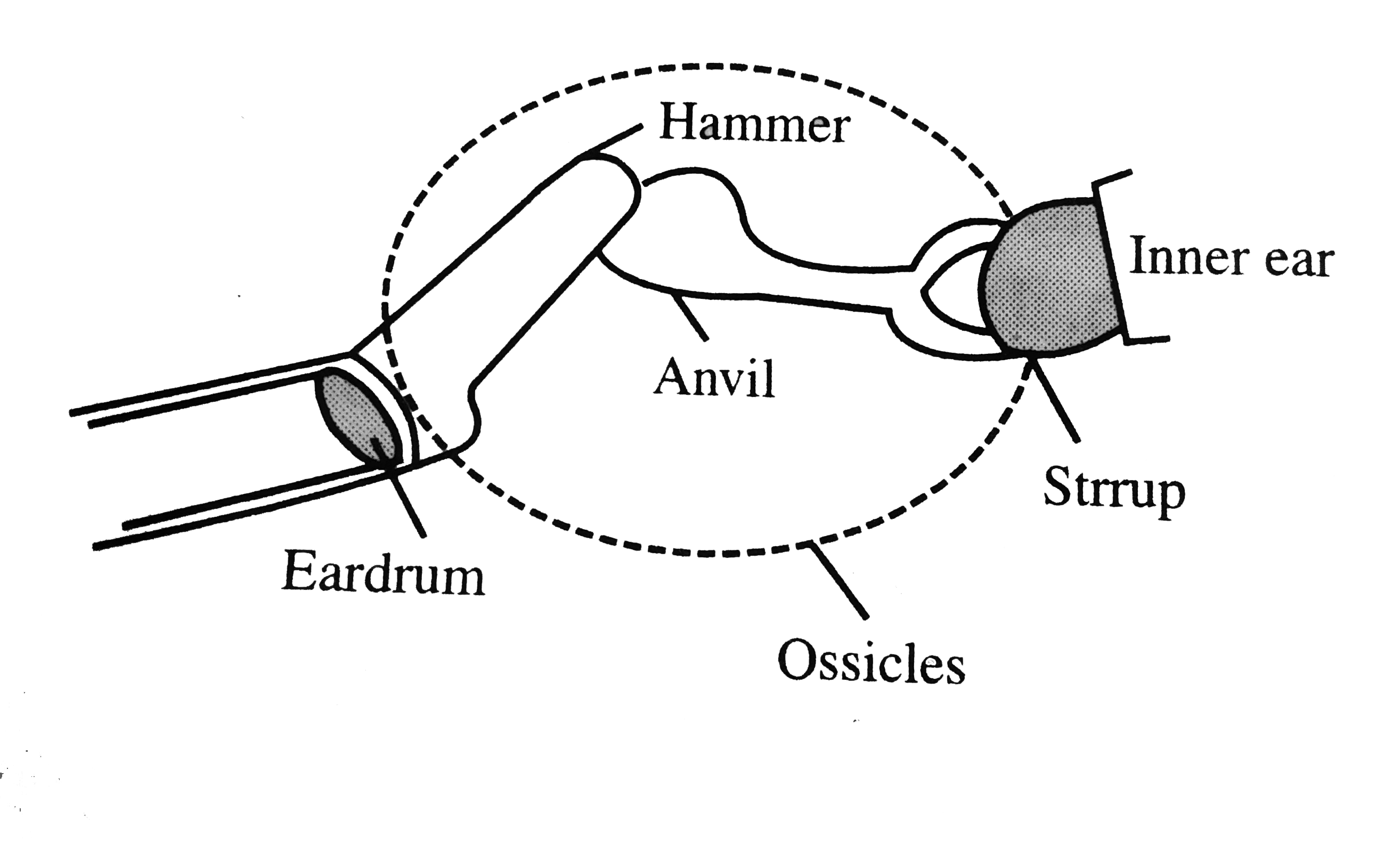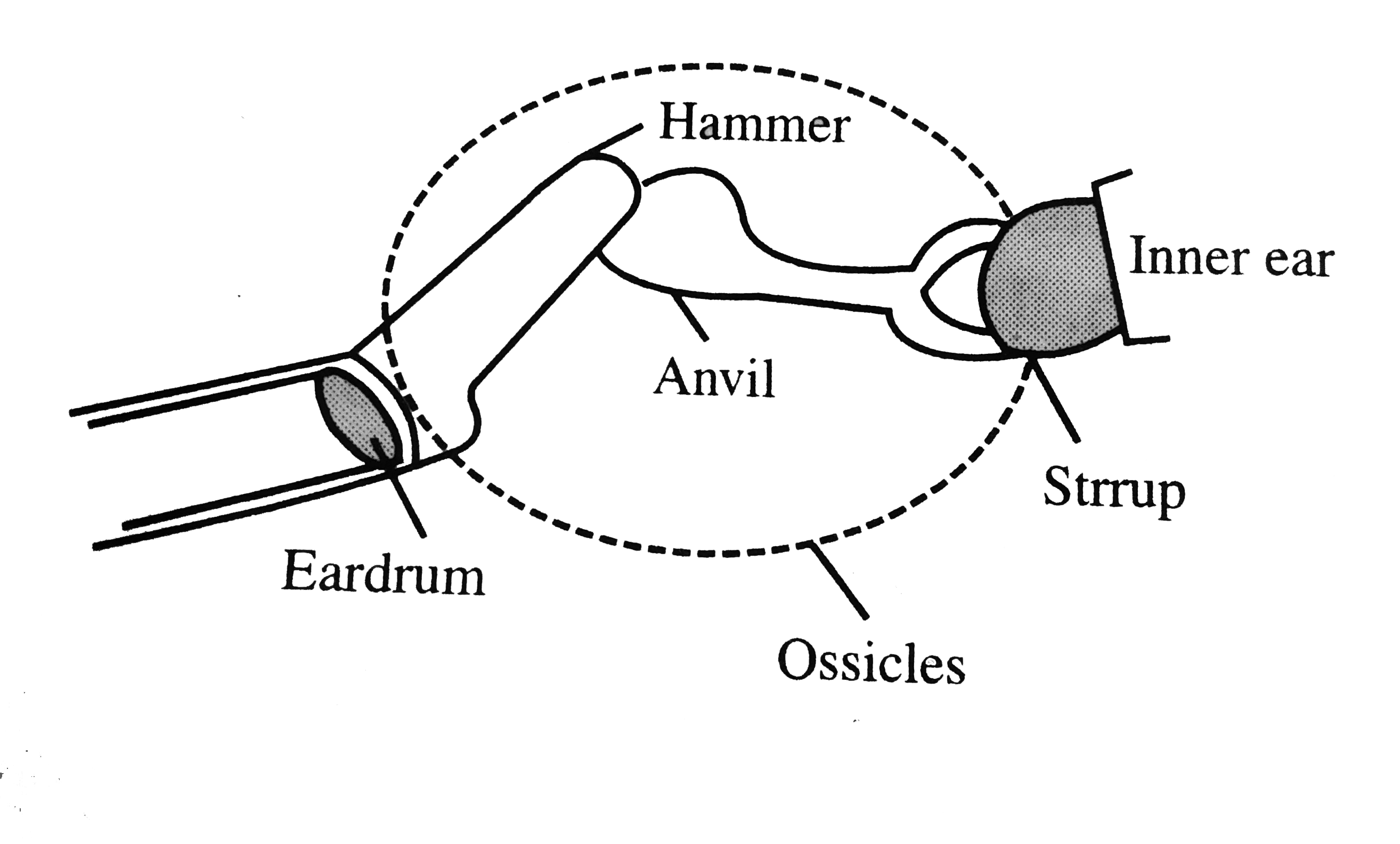In the ear of man, the perilymph passes from middle ot inner ear through
Foramen ovale
Fenestra ovalis
Fensestra rotundus
Tympanic membrane
The correct Answer is:b
Step by step video, text & image solution for In the ear of man, the perilymph passes from middle ot inner ear through by Biology experts to help you in doubts & scoring excellent marks in Class 11 exams.
Updated on:21/07/2023Topper's Solved these Questions
- NEURAL CONTROL AND COORDINATIONBOOK - ERRORLESS CHAPTER - NEURAL CONTROL AND COORDINATIONEXERCISE - NCERT
10 Videos
- NEURAL CONTROL AND COORDINATIONBOOK - ERRORLESS CHAPTER - NEURAL CONTROL AND COORDINATIONEXERCISE - Critical Thinking Questions
49 Videos
- NEURAL CONTROL AND COORDINATIONBOOK - ERRORLESS CHAPTER - NEURAL CONTROL AND COORDINATIONEXERCISE - Eye
59 Videos
- MORPHOLOGY OF FLOWERING PLANTSBOOK - ERRORLESS CHAPTER - MORPHOLOGY OF FLOWERING PLANTSEXERCISE - Morphology Of Flowering Plants
613 Videos
- PHOTOSYNTHESIS IN HIGHER PLANTSBOOK - ERRORLESS CHAPTER - PHOTOSYNTHESIS IN HIGHER PLANTSEXERCISE - Photosynthesis In Higher Plants
339 Videos
Similar Questions

When a sound wave enters the ear, it sets the eardrum into oscillation, which in turn causes oscillation of 3 tiny bones in the middle ear called ossicles. This oscillation is finally transmitted to the fluid filled in inner portion of the ear termed as inner ear, the motion of the fluid disturbs hair cells within the inner ear which transmit nerve impulses to the brain with the information that a sound is present. The three bones present in the middle ear are named as hammer, anvil and stirrup. Out of these the stirrup is the smallest one and this only connects the middle ear to inner ear as shown in the figure below. The area of stirrup and its extent of connection with the inner ear limits the sensitivity of the human ear consider a person's ear whose moving part of the eardrum has an area of about 50mm2 and the area of stirrup is about 5mm2. The mass of ossicles is negligible. As a result, force exerted by sound wave in air on eardrum and ossicles is same as the force exerted by ossicles on the inner ear. Consider a sound wave having maximum pressure fluctuation of 4×10−2Pa from its normal equilibrium pressure value which is equal to 105Pa. Frequency of sound wave in air is 332ms. Velocity of sound wave in fluid (present in inner ear) is 1500ms. Bulk modulus of air is 1.42×105Pa. Bulk modulus of fluid is 2.18×109Pa.
Q. Find the displacement amplitude of given sound wave in the fluid of inner ear.
View Solution
When a sound wave enters the ear, it sets the eardrum into oscillation, which in turn causes oscillation of 3 tiny bones in the middle ear called ossicles. This oscillation is finally transmitted to the fluid filled in inner portion of the ear termed as inner ear, the motion of the fluid disturbs hair cells within the inner ear which transmit nerve impulses to the brain with the information that a sound is present. The theree bones present in the middle ear are named as hammer, anvil and stirrup. Out of these the stirrup is the smallest one and this only connects the middle ear to inner ear as shown in the figure below. The area of stirrup and its extent of connection with the inner ear limits the sensitivity of the human ear consider a person's ear whose moving part of the eardrum has an area of about 50mm2 and the area of stirrup is about 5mm2. The mass of ossicles is negligible. As a result, force exerted by sound wave in air on eardum and ossicles is same as the force exerted by ossicles on the inner ear. Consider a sound wave having maximum pressure fluctuation of 4×10−2Pa from its normal equilibrium pressure value which is equal to 105Pa. Frequency of sound wave in air is 332ms. Velocity of sound wave in fluid (present in inner ear) is 1500ms. Bulk modulus of air is 1.42×105Pa. Bulk modulus of fluid is 2.18×109Pa.
Q. With respect to information provided above, mark the correct statement.
View Solution
Knowledge Check
The ear ossicle of man is
AMalleusBIncusCStapesDAll the above.both middle and internal ears occur in
AcaciliansBnecturnsCsalamanderDforg and toads.
When a sound wave enters the ear, it sets the eardrum into oscillation, which in turn causes oscillation of 3 tiny bones in the middle ear called ossicles. This oscillation is finally transmitted to the fluid filled in inner portion of the ear termed as inner ear, the motion of the fluid disturbs hair cells within the inner ear which transmit nerve impulses to the brain with the information that a sound is present. The theree bones present in the middle ear are named as hammer, anvil and stirrup. Out of these the stirrup is the smallest one and this only connects the middle ear to inner ear as shown in the figure below. The area of stirrup and its extent of connection with the inner ear limits the sensitivity of the human ear consider a person's ear whose moving part of the eardrum has an area of about 50mm2 and the area of stirrup is about 5mm2. The mass of ossicles is negligible. As a result, force exerted by sound wave in air on eardum and ossicles is same as the force exerted by ossicles on the inner ear. Consider a sound wave having maximum pressure fluctuation of 4×10−2Pa from its normal equilibrium pressure value which is equal to 105Pa. Frequency of sound wave in air is 332ms. Velocity of sound wave in fluid (present in inner ear) is 1500ms. Bulk modulus of air is 1.42×105Pa. Bulk modulus of fluid is 2.18×109Pa.
Q. Find the pressure amplitude of given sound wave in the fluid of inner ear.A0.03PaB0.04PaC0.3PaD0.4Pa
Middle ear has
View SolutionSound is transmitted from middle ar to internal ear due to
View SolutionEar ossicle from inner side of middle ear are
View SolutionThe middle ear of Rana tigrina has
View SolutionIn mammals, the middle ear ossicles from inside to outside are in the sequence of
View Solution
